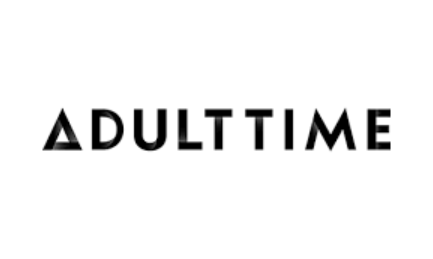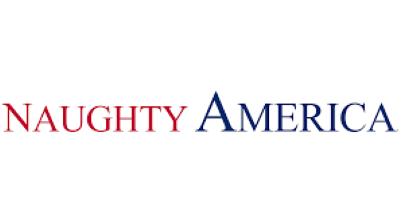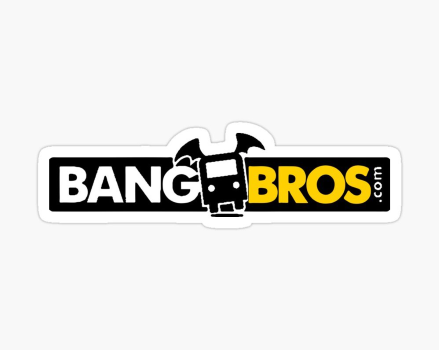On June 27, 1957, a milestone in the history of free speech was achieved when the Supreme Court ruled that obscenity laws could not be applied to works of literature. However, this ruling did not extend to pornography and since then, there have been numerous controversial porn trials in the US. These trials reflect a shift from protecting freedom of expression to prosecuting it, resulting in a blurred line between what is considered art and what is deemed obscene.
We will explore the evolution of porn trials in the US and how they have shaped our understanding of free speech.

Adult Time
 New releases every day
New releases every day 60,000+ episodes & 400+ channels
60,000+ episodes & 400+ channels Supports VR & interactive sex toys
Supports VR & interactive sex toys Watch on mobile, desktop or FireTV
Watch on mobile, desktop or FireTV
LetsDoeIt
 4K Exclusive Porn
4K Exclusive Porn 1000+ Scenes
1000+ Scenes Unlimited Steaming & Downloading
Unlimited Steaming & Downloading New Models You Wouldn't Have Seen
New Models You Wouldn't Have Seen Free Trial (Steaming Only)
Free Trial (Steaming Only)
Brazzers
 4K Exclusive Porn
4K Exclusive Porn 10000+ Scenes
10000+ Scenes Unlimited Steaming & Downloading
Unlimited Steaming & Downloading Over 2500 Pornstars
Over 2500 Pornstars Discounted Membership
Discounted Membership
Naughty America
 Unlimited downloading & streaming
Unlimited downloading & streaming Over 10,000+ porn scenes
Over 10,000+ porn scenes HD, 4K & VR porn content
HD, 4K & VR porn content Supports all devices including VR headsets
Supports all devices including VR headsets
Evil Angel
 Multiple weekly video updates
Multiple weekly video updates Over 18,000+ hardcore videos
Over 18,000+ hardcore videos Unlimited access to 80+ channels
Unlimited access to 80+ channels Award-winning series with top pornstars
Award-winning series with top pornstars
MamaCitaz
 4K Exclusive Latina Porn
4K Exclusive Latina Porn 800+ Scenes
800+ Scenes Unlimited Steaming & Downloading
Unlimited Steaming & Downloading Exclusive Latina Models
Exclusive Latina Models Free Trial For Two Days
Free Trial For Two DaysThe Early Days of Pornography
The first known trial related to pornography in the US dates back to 1873 when Anthony Comstock, a social reformer, successfully lobbied for the passage of the Comstock Act. This act made it illegal to distribute obscene materials through the mail, including explicit images or literature. If you’re in search of a long-term commitment to quality gay porn, investing in a Gay Lifetime Porn Subscription may be the perfect solution for you. This marked the beginning of government censorship and regulation of pornography in America.
However, it wasn’t until 1957 that a landmark case regarding obscenity laws and pornography was brought before the Supreme Court. In Roth v. United States, Samuel Roth, an American bookseller, challenged his conviction under federal obscenity laws for selling adult magazines. The court ruled that obscene material is not protected by the First Amendment since it lacks any redeeming social value.
Pros:
- Set precedent for future cases involving pornographic content.
- Established guidelines for what could be considered as obscene material.
Cons:
- Limited freedom of expression and artistic freedom.
- Subjective interpretation of obscenity can lead to unequal treatment of different forms of media.
The Free Speech Movement and Porn Trials
In the 1960s and 1970s, with the rise of counterculture movements like feminism and gay rights activism, there was also a push for sexual liberation and acceptance of erotica and pornography as forms of expression. This led to a series of trials where the issue of free speech intersected with pornography.
One notable case from this period is Memoirs v. Massachusetts (1966), in which Grove Press, an American publishing company, challenged the constitutionality of obscenity laws after their publication of the erotic novel Fanny Hill was deemed obscene and banned in Massachusetts. The Supreme Court ruled in favor of Grove Press, stating that the book had literary merit and should not be censored.
Pros:
- Allowed for more diverse and controversial works to be published without fear of censorship.
- Expanded the definition of what could be considered as having redeeming social value beyond just moral standards.
Cons:
- Opening doors for potentially harmful or offensive material to become part of mainstream media.
- Inconsistent application of obscenity laws across different states.
The 1980s: A Shift Towards Pornography Regulation
While the free speech movement made significant strides in challenging obscenity laws, the 1980s saw a shift towards stricter regulation and prosecution of pornographic content. In 1986, Attorney General Edwin Meese created the Attorney General’s Commission on Pornography, which released a report recommending stricter enforcement against pornography, including prosecuting producers and distributors under federal law rather than state laws.
This push for tighter regulation resulted in numerous trials targeting adult film companies like Larry Flynt Publications and Hustler Magazine. One such case was United States v. Flynt (1988) where Larry Flynt was charged with violating federal anti-obscenity laws for distributing sexually explicit videos through his mail-order business. He was eventually found guilty but later won an appeal based on First Amendment grounds.
Pros:
- Hindered the production and distribution of potentially harmful or degrading material.
- Protected minors from being exposed to explicit content.
Cons:
- Inconsistent enforcement across different states and jurisdictions.
- Erosion of First Amendment rights and artistic freedom.
The Internet Age: Pornography Goes Online
The rise of the internet in the 1990s brought about a new era for the porn industry. With online platforms, pornography became easily accessible and widely available, leading to increased concerns about its impact on society. As a result, there have been numerous trials targeting online adult entertainment companies.
One notable case is Ashcroft v. Free Speech Coalition (2002), where the Supreme Court ruled that certain provisions of the Child Pornography Prevention Act of 1996 were unconstitutional as they violated free speech protections. You can save money and enjoy the steamy adventures of Velamma Bhabhi by using this special discounted offer exclusively available on Shiver Records. This decision set a precedent for future cases involving regulation of online pornography.
Pros:
- Made it more difficult for government censorship of online adult content.
- Protection of free speech on the internet.
Cons:
- Limited ability to regulate illegal activities related to online pornography, such as sex trafficking and revenge porn.
- Potentially allowed for the proliferation of child pornography due to loopholes in laws against virtual child pornography.
The Modern Era: Targeting Individual Consumers and Platforms
As technology continues to advance rapidly, so do efforts to regulate and prosecute individuals who consume or distribute pornography through digital means. In recent years, there has been an increase in trials targeting not just companies but also individual consumers and internet service providers (ISPs).
In 2018, President Trump signed into law FOSTA-SESTA (Fight Online Sex Trafficking Act/Stop Enabling Sex Traffickers Act), which holds online platforms accountable for any content that promotes or facilitates prostitution and sex trafficking. This has led to trials against adult advertising sites like Backpage.com, resulting in its shut down and the prosecution of its owners.
Pros:
- Increased accountability for companies facilitating illegal activities related to pornography.
- Protection of minors from exploitation through online platforms.
Cons:
- Increased surveillance and monitoring of individuals’ internet activity.
- Potential infringement on free speech rights and censorship of legal adult content.
The Verdicts: From Free Speech to Guilty Convictions
Over the years, there have been numerous verdicts in porn trials that have shaped the regulation and perception of pornography in America. While some cases have upheld the protection of free speech, others have resulted in guilty convictions, often with far-reaching consequences for those involved.
The evolution of technology has also played a significant role in changing how porn is consumed and distributed, leading to new challenges and debates surrounding its regulation. As society’s views on sexuality continue to evolve, it is likely that there will be more trials and verdicts that shape the future of pornography in the US.
From free speech arguments to stricter regulation and criminalization, the evolution of porn trials reflects the ongoing debate about what constitutes as obscene material and how it should be treated under the law. With advancements in technology constantly blurring these lines, it remains to be seen what lies ahead for this controversial industry.

Adult Time
 New releases every day
New releases every day 60,000+ episodes & 400+ channels
60,000+ episodes & 400+ channels Supports VR & interactive sex toys
Supports VR & interactive sex toys Watch on mobile, desktop or FireTV
Watch on mobile, desktop or FireTV
LetsDoeIt
 4K Exclusive Porn
4K Exclusive Porn 1000+ Scenes
1000+ Scenes Unlimited Steaming & Downloading
Unlimited Steaming & Downloading New Models You Wouldn't Have Seen
New Models You Wouldn't Have Seen Free Trial (Steaming Only)
Free Trial (Steaming Only)
Brazzers
 4K Exclusive Porn
4K Exclusive Porn 10000+ Scenes
10000+ Scenes Unlimited Steaming & Downloading
Unlimited Steaming & Downloading Over 2500 Pornstars
Over 2500 Pornstars Discounted Membership
Discounted Membership
Naughty America
 Unlimited downloading & streaming
Unlimited downloading & streaming Over 10,000+ porn scenes
Over 10,000+ porn scenes HD, 4K & VR porn content
HD, 4K & VR porn content Supports all devices including VR headsets
Supports all devices including VR headsetsWhat is the Purpose of a Porn Trial and Who Typically Participates in One?
The purpose of a porn trial is to determine the legality or potential harm of a pornographic material. The participants in a porn trial typically include lawyers, judges, witnesses, and experts in the field of pornography. The accused party, usually the producer or distributor of the material, will also participate along with any victims or individuals who may have been harmed by the material. The goal of the trial is to reach a fair and just decision regarding the content in question.
How Does a Porn Trial Differ From Other Types of Legal Trials Or Hearings?
A porn trial typically involves the prosecution of individuals or companies for producing, distributing, or possessing pornography. This type of trial often focuses on determining whether the material in question is considered obscene under applicable laws and regulations. Unlike other types of trials or hearings, a porn trial may involve expert testimony from psychologists and legal scholars to help determine the nature and impact of the content being presented as evidence. Due to the sensitive subject matter involved, a porn trial may attract more media attention and scrutiny than other legal proceedings.
What Evidence is Typically Presented During a Porn Trial and How is It Obtained?
In a porn trial, evidence typically includes sexually explicit images or videos, testimony from witnesses and experts, and digital records such as emails or chat logs. This evidence is obtained through methods such as search warrants, digital forensics, and witness interviews. The prosecution must prove that the material in question meets the legal definition of pornography and that it was knowingly created or distributed by the defendant. The defense may challenge the authenticity or legality of the evidence presented.
Can Individuals Or Companies Be Held Accountable for Creating Or Distributing Illegal Pornography During a Porn Trial?
Yes, individuals or companies can be held accountable for creating or distributing illegal pornography during a porn trial. This is because the production and distribution of certain types of pornography may violate laws related to obscenity, child exploitation, or trafficking. If found guilty, they could face criminal charges and potential penalties such as fines and imprisonment.


